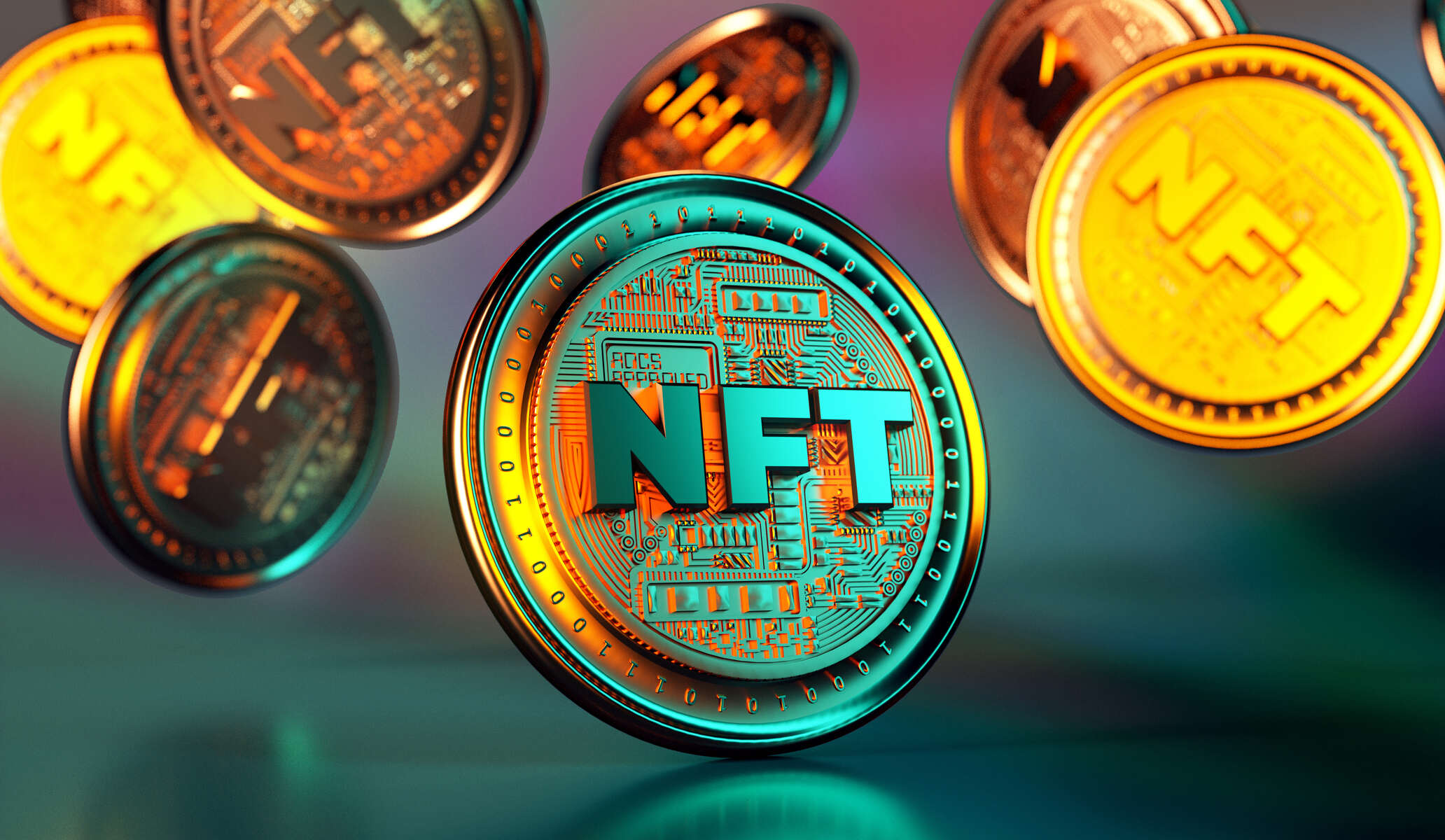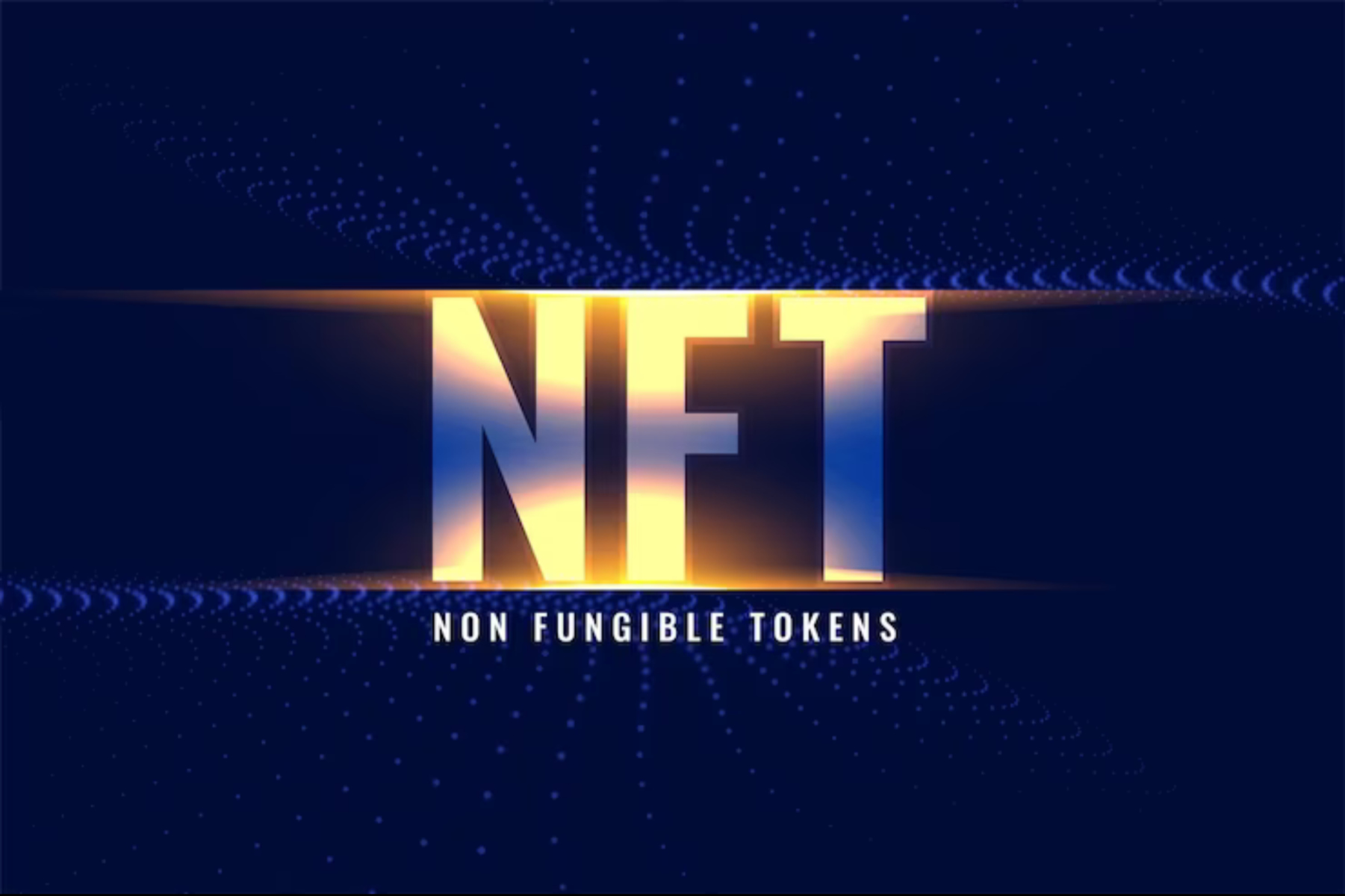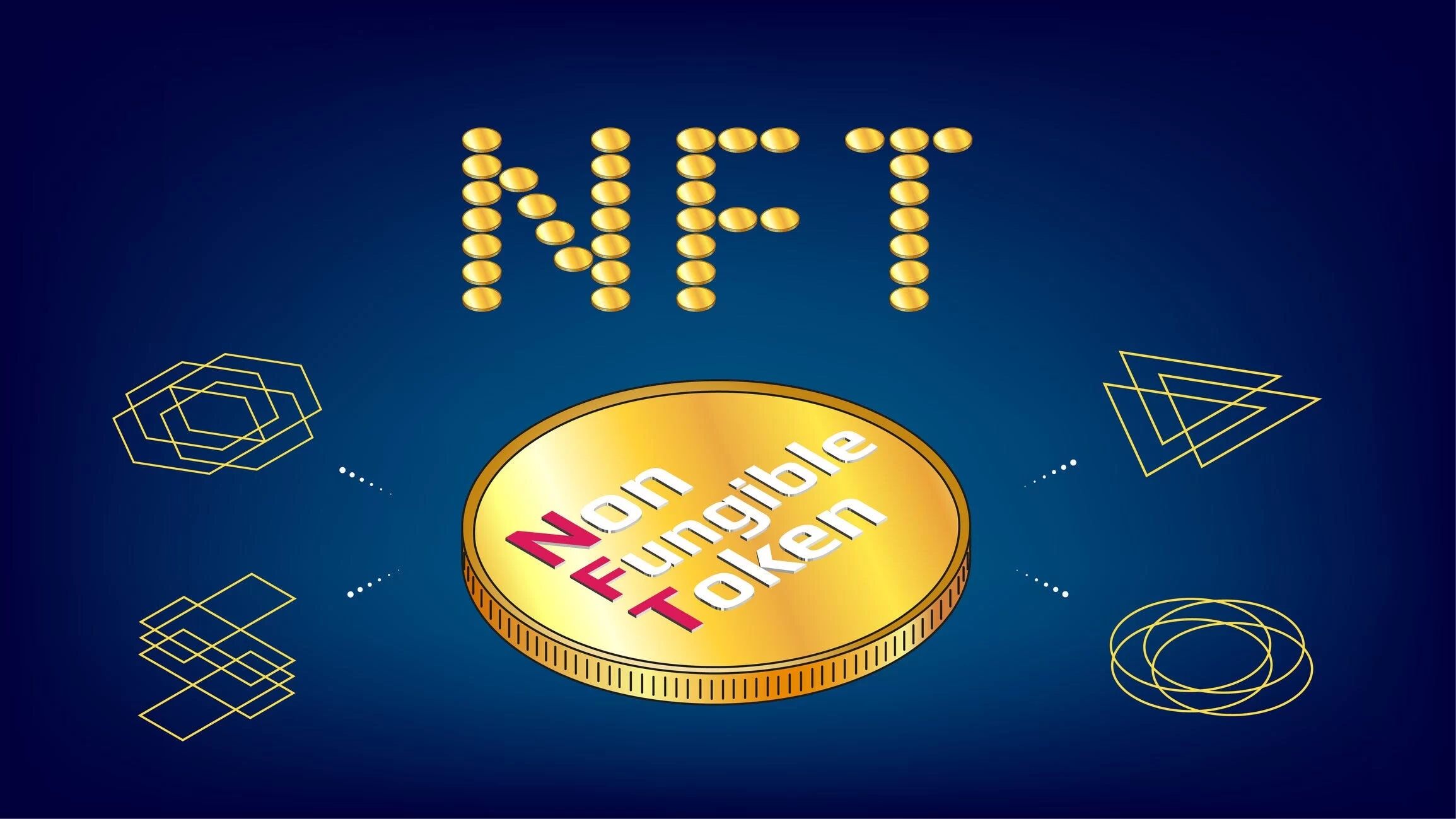Introduction
Welcome to the world of NFTs, a recent phenomenon that has taken the art and digital industries by storm. NFT, which stands for Non-Fungible Token, has become a buzzword among artists, collectors, and investors. But along with its rising popularity, there is a growing concern about the environmental impact of NFTs, particularly regarding the energy required to mint them.
What exactly is an NFT? In simple terms, it is a unique digital asset that is stored on a blockchain, which serves as a digital ledger. Unlike cryptocurrencies like Bitcoin and Ethereum, which are fungible and can be traded for one another, NFTs are indivisible and cannot be exchanged on a one-to-one basis.
Minting an NFT refers to the process of creating and registering a digital asset on a blockchain platform. It involves linking the digital file, whether it’s a piece of artwork, a music composition, or a video, to a unique token that represents ownership and authenticity.
As the NFT market booms, questions about the environmental impact have emerged. The energy consumption associated with minting NFTs has drawn criticism, with concerns raised about the carbon footprint and ecological consequences.
It is crucial to understand the factors contributing to the energy consumption of NFT minting, how it compares to other industries, and the available energy-efficient alternatives. By exploring these aspects, we can gain a clearer perspective on the environmental implications of NFTs and potentially find ways to mitigate their impact.
In this article, we will delve into the process of minting an NFT, analyze the energy consumption associated with it, discuss the factors that influence the energy consumption, and explore the environmental concerns surrounding NFTs. Furthermore, we will explore potential energy-efficient alternatives that can help mitigate the carbon footprint associated with NFT production.
What is an NFT?
An NFT, short for Non-Fungible Token, is a unique digital asset that is stored on a blockchain, a decentralized digital ledger. Unlike traditional cryptocurrencies such as Bitcoin or Ethereum, which are fungible and can be traded on a one-to-one basis, NFTs are indivisible and cannot be exchanged directly for another asset of the same value.
What makes NFTs stand out is their ability to represent ownership and authenticity of a specific digital file, whether it’s a piece of art, music, videos, collectibles, or even virtual real estate. Each NFT contains metadata that provides detailed information about the asset, such as the creator, the date of creation, and any associated intellectual property rights.
One key feature of NFTs is their uniqueness. Each NFT is distinct, and its ownership is verifiable through the blockchain. This characteristic has revolutionized the art world, allowing artists to sell digital pieces directly to collectors while ensuring provenance and authenticity. With NFTs, artists can now monetize their digital creations, opening up new avenues for creativity and revenue generation.
NFTs have gained significant traction in recent years, with high-profile sales and celebrity endorsements bringing them into the mainstream. Digital artworks have sold for millions of dollars, generating headlines and attracting the attention of artists, collectors, and investors worldwide.
One key aspect of NFTs is their transferability. Once an NFT is purchased, the ownership can be transferred from one party to another by utilizing the blockchain. This feature allows for a vibrant secondary market, where collectors and investors can buy and sell NFTs, much like traditional art auctions.
The rise of NFTs has presented new opportunities for artists, enabling them to reach a global audience without relying on the traditional gallery system. It has also allowed collectors to diversify their portfolios and invest in digital assets that hold value and have the potential for appreciation over time.
However, critics argue that the current NFT market is inflated and speculative, with concerns about the environmental impact of the technology. The energy consumption associated with NFT minting has raised eyebrows, prompting discussions on sustainable alternatives and carbon offsetting.
Understanding the nature of NFTs is crucial for assessing their environmental impact and exploring potential solutions. In the next sections, we will delve deeper into the process of minting an NFT and analyze the energy consumption involved. By doing so, we can uncover the factors influencing NFT energy consumption and consider more sustainable approaches in the future.
The Process of Minting an NFT
Minting an NFT involves several steps that transform a digital file into a unique token on the blockchain. While the specific process may vary depending on the platform or blockchain used, the general steps can be outlined as follows:
- Choose a Blockchain Platform: The first step is to select a blockchain platform that supports NFT creation. Ethereum is currently the most popular choice, but other platforms like Binance Smart Chain and Flow are also gaining traction.
- Create a Wallet: To mint an NFT, you need a digital wallet to hold and manage your tokens. This wallet will also serve as your identity on the blockchain. Wallets can either be self-hosted or hosted by a third-party provider.
- Prepare the Digital Asset: Before minting an NFT, you need to create or obtain the digital asset that you want to tokenize. It can be a piece of artwork, a music composition, a video, or any other form of digital content. Ensure that your file is in a supported format and meets the platform’s requirements.
- Upload and Mint: Using the chosen blockchain platform, you will upload your digital asset to be minted as an NFT. The platform will generate a unique token that represents ownership and authenticity of the asset. You will need to provide relevant information, such as the title, description, and any royalty fees associated with subsequent sales.
- Set a Price or Auction: After minting the NFT, you have the option to set a fixed price for it or create an auction where interested buyers can bid on the token. This step is important for monetizing your NFT and allowing others to acquire ownership.
- List and Promote: Once your NFT is minted and priced, you can list it on various NFT marketplaces or share it on social media platforms to attract potential buyers. Building a strong presence and marketing strategy can significantly impact the visibility and saleability of your NFT.
- Transfer Ownership: When a buyer decides to purchase your NFT, they will initiate a transaction to send the agreed-upon payment to your wallet address. Once the transaction is confirmed, the ownership of the NFT will be transferred to the buyer’s wallet, and the corresponding payment will be received by the seller.
The process of minting an NFT is relatively straightforward, but the energy consumption associated with it has raised concerns about sustainability. The next section will explore the environmental impact of NFT energy consumption and shed light on the factors contributing to it.
The Energy Consumption of NFT Minting
The process of minting an NFT requires energy, primarily due to the underlying blockchain technology. The energy consumption associated with NFT minting has become a topic of discussion and scrutiny, especially as the popularity of NFTs continues to grow.
The blockchain technology used for NFTs, such as Ethereum, operates on a consensus mechanism called proof of work (PoW). In PoW, miners compete to solve complex mathematical problems, validating transactions and adding them to the blockchain. This process requires significant computational power and energy consumption.
As a result, the energy consumption of NFT minting can be relatively high, especially when compared to traditional digital assets. The exact energy consumption varies depending on factors such as the blockchain platform, the transaction volume, and the computational power of the network.
A common point of criticism of NFT energy consumption is the carbon footprint it leaves behind. Many blockchain platforms, including Ethereum, rely on electricity generated from fossil fuels to power their mining operations. This leads to greenhouse gas emissions, contributing to climate change.
According to a study conducted by Digiconomist, the energy consumption of the Ethereum network is comparable to that of a small country. In some instances, the energy required to mint a single NFT can be equivalent to an average household’s energy consumption for a month.
However, it is worth noting that efforts are being made to address the energy consumption and carbon footprint of NFT minting. Some blockchain platforms are exploring alternative consensus mechanisms, such as proof of stake (PoS), which consumes significantly less energy compared to PoW.
Additionally, initiatives are being taken to offset the carbon emissions associated with NFT minting. Some artists and platforms are participating in carbon offset programs, where they invest in projects that reduce greenhouse gas emissions or remove carbon dioxide from the atmosphere.
Understanding the energy consumption of NFT minting is essential for assessing the environmental impact of this emerging industry. In the next section, we will explore the factors that influence NFT energy consumption, providing insights into areas where more sustainable practices can be implemented.
Factors Affecting NFT Energy Consumption
The energy consumption of NFT minting is influenced by several factors, which vary depending on the blockchain platform and its underlying technology. Understanding these factors is crucial for identifying opportunities to reduce energy consumption and make NFT minting more sustainable.
1. Blockchain Platform: Different blockchain platforms have varying energy consumption levels. Platforms like Ethereum, which utilize the proof of work (PoW) consensus mechanism, tend to have higher energy requirements compared to platforms using proof of stake (PoS) or other alternative mechanisms. Choosing a blockchain platform employing more energy-efficient consensus mechanisms can help reduce energy consumption.
2. Transaction Volume: The number of transactions processed on the blockchain impacts energy consumption. Higher transaction volumes require more computational power and energy to validate and add those transactions to the blockchain. As NFTs gain popularity and transaction volumes increase, it is important to find ways to efficiently scale blockchain networks without significantly increasing energy consumption.
3. Network Congestion: Highly congested blockchain networks may experience slower transaction processing times, resulting in increased energy consumption. When transactions are queued and waiting to be processed, the network continues to consume energy to maintain security and consensus. Improving scalability and addressing network congestion can reduce energy consumption.
4. Computational Power: The computational power of the network’s miners or validators impacts the energy consumed during NFT minting. More powerful computational devices require more energy to solve complex mathematical problems and validate transactions. Encouraging energy-efficient mining practices and hardware can help reduce energy consumption in this aspect.
5. Energy Source: The source of electricity used to power the blockchain network plays a significant role in determining the environmental impact. If the energy comes from fossil fuel sources, it contributes to greenhouse gas emissions and climate change. Shifting towards renewable energy sources, such as solar or wind power, can minimize the carbon footprint associated with NFT minting.
6. Blockchain Upgrades and Innovations: Continuous developments in blockchain technology can lead to energy-saving upgrades and innovations. For example, the transition from PoW to PoS consensus mechanisms reduces energy consumption. Remaining proactive and encouraging research and development efforts can contribute to more sustainable practices in the NFT space.
By considering these factors and implementing energy-efficient measures, it is possible to mitigate the environmental impact of NFT minting. In the next section, we will compare NFT energy consumption to other industries to provide a broader context for evaluating its sustainability.
Comparing NFT Energy Consumption to Other Industries
When assessing the energy consumption of NFT minting, it is essential to put it into perspective by comparing it to the energy consumption of other industries. This comparison helps us understand the relative impact of NFTs on energy usage and provides insights into whether concerns about NFT energy consumption are justified.
It is important to note that direct comparisons between industries can be challenging due to various factors, including the diversity of energy sources, differences in energy consumption profiles, and the evolving nature of technology. However, we can provide some general comparisons based on available data and estimates:
E-commerce: The energy consumption associated with online shopping, including the operation of e-commerce platforms, data centers, and delivery logistics, is significant. However, it is difficult to compare directly with NFT minting as e-commerce covers a wide spectrum of activities and requires substantial computing infrastructure.
Streaming Services: Streaming platforms for music and video consume substantial amounts of energy to power the data centers that host the content. While specific energy consumption figures vary, streaming services have a more established presence and impact compared to the relatively young NFT industry.
Traditional Art Market: The traditional art market, including the production and distribution of physical artworks, involves various energy-intensive processes, such as transportation, materials production, and exhibition spaces. While the energy consumption associated with traditional art may be dispersed across different sectors, the comparison with NFT energy consumption depends on the specific circumstances of each case.
It is worth noting that the energy consumption of industries like e-commerce, streaming services, and the traditional art market has been in existence for much longer than NFTs. As a rapidly growing sector, NFTs have attracted more attention due to their notable energy consumption. However, it is important to consider the potential for energy-saving measures and advancements in blockchain technology to address the environmental concerns associated with NFT minting.
Furthermore, the comparison between NFT energy consumption and other industries should not discount the importance of overall sustainability efforts and the need to transition to renewable energy sources. Emphasizing energy efficiency and implementing eco-friendly practices across different sectors is crucial for mitigating climate change and reducing the carbon footprint of various industries.
In the next section, we will delve into the environmental concerns and criticisms surrounding NFT minting, highlighting the need for sustainable alternatives.
Environmental Concerns and Criticisms
The environmental impact of NFT minting has garnered significant attention and raised concerns among environmentalists, artists, and communities advocating for sustainability. While NFTs have gained popularity for their unique digital ownership and creative opportunities, criticisms have emerged regarding their carbon footprint and ecological consequences.
One of the primary environmental concerns is the energy consumption associated with blockchain technology, particularly when using proof of work (PoW) consensus mechanisms. Critics argue that the energy consumed during NFT minting contributes to carbon emissions and exacerbates climate change, especially if the electricity used is derived from fossil fuel sources.
Another criticism is the comparison between the energy consumed for NFT minting and the perceived value of the digital assets being created. Skeptics question whether the energy expended is proportionate to the intrinsic value of the digital files, especially when digital artworks or collectibles are sold for significant sums of money.
Additionally, concerns have been raised over the potential e-waste and environmental consequences resulting from the rapid adoption of NFTs. The production and disposal of computing devices used for mining and participating in the NFT ecosystem can contribute to electronic waste and pose challenges for responsible recycling and disposal practices.
Furthermore, the current popularity and exponential growth of the NFT market have led to concerns about its sustainability in the long term. Some argue that the hype surrounding NFTs may lead to unsustainable practices, with a focus on quick profits rather than long-term ecological considerations.
It is important to acknowledge these environmental criticisms and concerns surrounding NFT minting. However, it is equally crucial to recognize that efforts are being made within the industry to address these issues and find sustainable alternatives.
In the following section, we will explore energy-efficient alternatives and potential solutions for reducing the environmental impact of NFT minting, highlighting the need for responsible and sustainable practices.
Energy-Efficient Alternatives for NFT Minting
As concerns about the energy consumption and environmental impact of NFT minting continue to grow, efforts are being made to explore and develop energy-efficient alternatives. Sustainability-focused initiatives and technological advancements offer hope for reducing the carbon footprint associated with NFTs. Here are some energy-efficient alternatives:
1. Transition to Proof of Stake: Many blockchain platforms, including Ethereum, are transitioning from the energy-intensive proof of work (PoW) consensus mechanism to the more energy-efficient proof of stake (PoS) mechanism. PoS requires validators to hold and “stake” a certain amount of cryptocurrency, reducing the need for resource-heavy mining operations and significantly lowering energy consumption.
2. Utilize Layer 2 Solutions: Layer 2 solutions built on top of existing blockchains can improve scalability and reduce energy consumption. These solutions, such as sidechains and state channels, enable the processing of transactions off-chain, alleviating the burden on the main blockchain network. By reducing the number of on-chain operations, layer 2 solutions can conserve energy.
3. Explore Energy-Efficient Blockchains: With the expanding range of blockchain platforms, creators and collectors have the option to choose energy-efficient blockchains that prioritize sustainability. Platforms like Tezos and Flow utilize PoS consensus mechanisms and have been recognized for their lower energy consumption compared to PoW-based blockchains.
4. Offset Carbon Footprints: Artists, collectors, and NFT platforms can contribute to environmental sustainability by participating in carbon offset programs. This involves investing in projects that reduce greenhouse gas emissions or remove carbon dioxide from the atmosphere, thereby mitigating the environmental impact of NFT minting.
5. Educate and Promote Green Practices: Raising awareness about the environmental impact of NFTs and encouraging responsible practices within the community can stimulate positive change. Artists, collectors, and platforms can educate their audiences about energy efficiency, renewable energy, and the importance of minimizing the carbon footprint associated with NFT minting.
By adopting these energy-efficient alternatives and practices, the NFT industry can potentially reduce its environmental impact without compromising creativity and innovation. Collaboration among industry stakeholders, technological advancements, and a commitment to sustainability will be instrumental in achieving a more eco-friendly approach to NFT minting.
Next, we will conclude our exploration of NFT energy consumption and its environmental implications.
Conclusion
The rise of NFTs has brought about exciting opportunities for artists, collectors, and investors in the digital realm. However, it is crucial to address the environmental concerns and energy consumption associated with NFT minting given their surging popularity.
NFT minting involves significant energy consumption, primarily due to the underlying blockchain technology, particularly when utilizing proof of work (PoW) consensus mechanisms. This has led to concerns about the carbon footprint and ecological impact of the NFT industry.
However, the industry is not devoid of solutions. There are energy-efficient alternatives being explored, such as transitioning to proof of stake (PoS) consensus mechanisms, utilizing layer 2 solutions, and exploring energy-efficient blockchains. These changes can significantly reduce the energy consumption and carbon footprint associated with NFT minting.
Furthermore, offsetting carbon footprints through participation in carbon offset programs and promoting green practices within the industry are steps towards achieving a more sustainable future for NFTs.
While it is important to acknowledge the energy consumption of NFTs, evaluating their impact requires a broader perspective. Comparisons with other industries highlight the evolving nature of technology and the need for energy-efficient practices across various sectors.
Ultimately, a commitment to responsible and sustainable practices, combined with ongoing technological advancements and a focus on renewable energy sources, can help mitigate the environmental concerns associated with NFT minting.
As the NFT industry continues to evolve, it is crucial for stakeholders, including artists, collectors, investors, and platforms, to remain conscious of the environmental impact of their actions and strive for a balanced approach that fosters creativity while minimizing energy consumption.
By embracing energy-efficient alternatives and promoting sustainability within the NFT ecosystem, we can pave the way for a greener and more environmentally conscious future for digital assets.

























